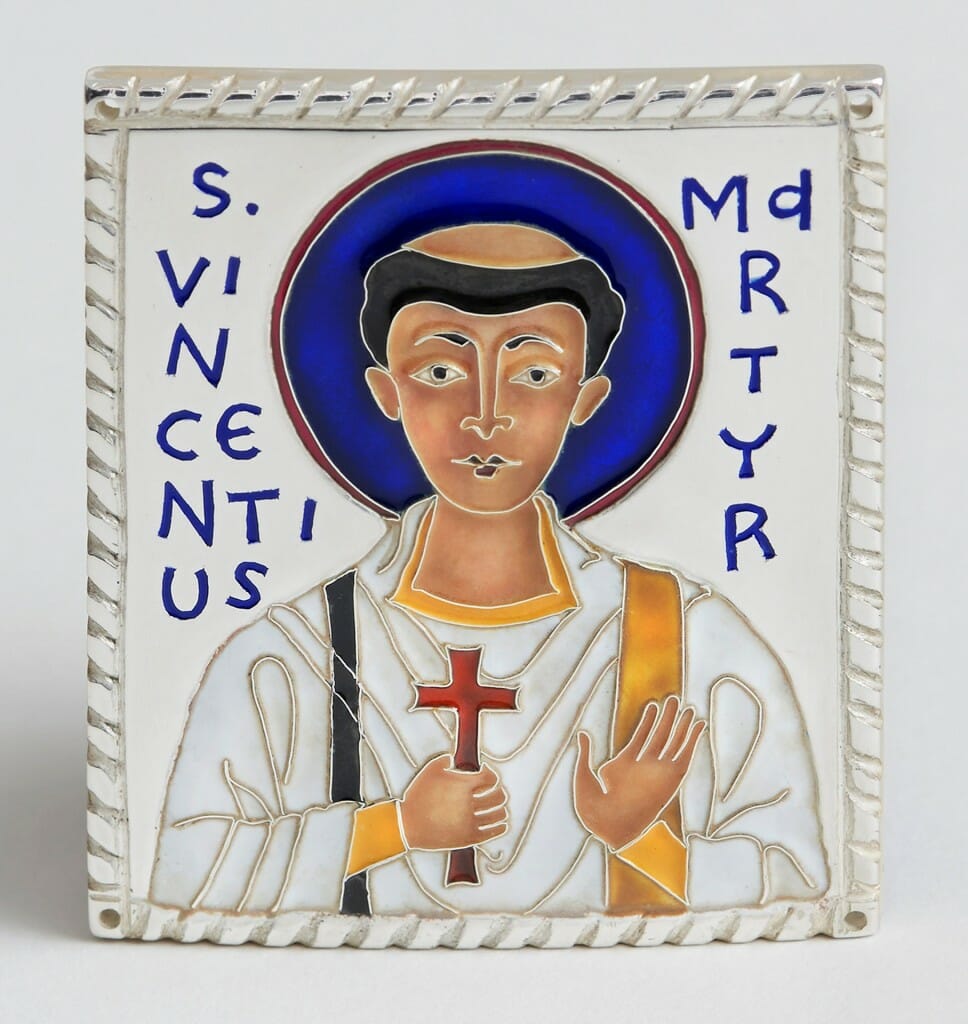Posts Tagged ‘Aidan Hart’
The Mosaic Apse of Sant’Apollinaire in Classe, Ravenna
THE MOSAIC APSE OF SANT’APOLLINARE IN CLASSE, RAVENNA: A Miracle of Design Aidan Hart There is some iconography that can only be described as miraculous. Such is the sixth century apse mosaic at the basilica of Saint Apollinare in Classe, five miles from Ravenna, Italy. Such works seem to flash forth, and are never –…
Continue reading »The Transfiguration Secco for Lancaster University Catholic Chaplaincy
The Transfiguration Secco for Lancaster University Catholic Chaplaincy Early in March my assistant Martin Earle, myself, and a former student from the Diploma in Icon Painting that I teach, Fran Whiteside, completed a secco wall painting of the Transfiguration. It took us just twelve days compared to the twenty months we had just spent on…
Continue reading »Hand and Machine: Making Liturgical Furnishings
Principles for the Design and Making of Liturgical Furnishings Aidan Hart Handing over from hand to machine A tool in the hand of a craftsperson is an extension of their body, mind and soul. He or she feels the resistance of the stone or wood. Through the tool the material speaks back to them, and…
Continue reading »The Altar and The Portico (pt.2): Gallery Art
This is post 2 of 2 in the series “The Altar and The Portico” Aidan Hart explores the relationships and differences between sacred art and secular gallery art. The Altar and The Portico (pt.1) The Altar and The Portico (pt.2): Gallery Art THE SACRED AND THE SECULAR The Relationship of Orthodox Iconography and Gallery Art…
Continue reading »The Altar and The Portico (pt.1)
This is post 1 of 2 in the series “The Altar and The Portico” Aidan Hart explores the relationships and differences between sacred art and secular gallery art. The Altar and The Portico (pt.1) The Altar and The Portico (pt.2): Gallery Art THE ALTAR AND THE PORTICO (PT.1) The Relationship of Orthodox Iconography and Gallery…
Continue reading »Today and Tomorrow: Principles in the Training of Future Iconographers pt.2
This is post 2 of 2 in the series “Today and Tomorrow: Principles in the Training of Future Iconographers” Aidan Hart looks at principles of style, composition and fabrication in icons, how these are meaningful in our consideration of iconography and how such considerations should be transmitted to the next generation of artists. Today and…
Continue reading »Lighting in Orthodox Churches: Liturgical Principles and Practical Ideas
What are we aiming to achieve when we choose lighting for an Orthodox church? We need a certain amount of light to see, but lighting also creates an ambience, helps to create an inner state. So what ambience are we seeking to create in our churches? These and other questions face parishes and monasteries when…
Continue reading »Ciboria and Tabernacles: A Short History
(This article continuation of my last post: Holy Tables with Reliquaries: A Short History ) The Ciborium A ciborium is a form of canopy supported by columns over the holy table (25). It is sometimes also called a baldachin, but strictly speaking this latter term should be limited to cloth canopies. Ciboria came to be common,…
Continue reading »Holy Tables with Reliquaries, a Short History
In this overview and the one that will follow I have combined the history of altars (also called holy tables), ciboria and tabernacles because their respective developments are somewhat related. In this first section I will deal with Holy Tables and will focus on ciboria and tabernacles in the second installment. My interest in…
Continue reading »A Cloisonné Enamel Reliquary Icon of Saint Vincent of Zaragoza
Editor’s note: This article continues Aidan Hart’s recent article about a reliquary for Saint Vincent of Zaragoza and details Christabel Anderson’s process for making the cloisonnée icon. This article contains a background to the history and technique of cloisonné enamel and a description of the processes used in making the cloisonné enamel icon plaque of Saint Vincent…
Continue reading »









